Showing 17–32 of 43 results
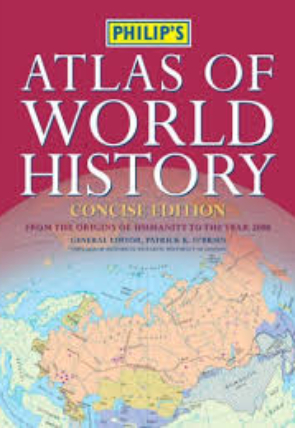
PHILLIPS ATLAS OF THE WORLD HISTORY 2021 EDITION FREE BOOK PDF

PHILLIPS ATLAS OF THE WORLD HISTORY 2021 EDITION FREE BOOK PDF
PHILLIPS ATLAS OF THE WORLD HISTORY FREE BOOK DESCRIPTION :-
A major reference work, Philip’s Atlas of World History – concise edition records the history of human society throughout the world, from prehistory to the year 2005, in 450 specially commissioned colour maps, 200 illustrations, tables and diagrams, and 200,000 words. It has been updated to include recent events across the world, including those in Iraq, Afghanistan, Russia and the former Soviet republics.
The Atlas of World History – concise edition goes beyond the conventional focus on European and American political history to give worldwide coverage of socio-economic, cultural, and religious themes. Due weight is given to regions such as Central and South America, Africa, Asia, and Oceania that are comparatively neglected by many competitor titles.
Commissioned from academic writers with direct involvement in college teaching, and with a foreword and general consultancy by Professor Patrick O’Brien, former Director of the Institute of Historical Research at the University of London, Philip’s Atlas of World History is also highly accessible for the general reader with an interest in world history.
World (human origins to c.ad 500), the Medieval World (c.500-1500), the Early Modern World (c.1500-1770), the Age of Revolutions (c.1770-1914), and the Twentieth Century (from 1914). Each part opens with a two-spread introduction that highlights the main themes of the period and outlines worldwide trends and developments. Following the introduction, individual spreads each examine a particular region over a specified period, with detailed maps, illustrations, and tables, and c.1200 words of text.
Often called the “location bible,” Here Comes The Guide features multitudes of Northern California event sites, including private estates, historic gardens, yachts, museums, wineries, hotels, and many others. Engaging descriptions give readers a clear picture of each place, while details about pricing, services, and amenities help streamline the selection process. Here Comes The Guide also includes over 125 prescreened vendors, such as photographers, caterers, florists, and cake makers, along with tips on how to hire and work with event professionals.
Philip’s Atlas of World History presents the entire story of civilisation in its physical setting, from man’s earliest beginnings to the latest political developments of the twentieth century. It is specially designed to help the reader visualise the great historical themes and turning points of the past, combining maps which graphically depict the scope of these events with text explaining key historical themes and contexts.The book is divided into five sections, each of which contains an introduction which highlights the main themes of the period and outlines its key trends and developments: 1. The Ancient World (human origins to AD500) 2. The Medieval World (500 – 1500) 3. The Early Modern World (c.1500 – 1770) 4. An Age of Revolutions (c.1770 – 1914) 5. The Twentieth Century (from 1914)These five sections contain a total of 135 double-page spreads, each of which portrays key developments in a world region over a specific period of time.Each spread features brand-new, highly-informative colour maps created by Philip’s renowned cartographers, together with complementary text which discusses and explains the larger historical, political, geographical, cultural, social and religious themes behind each topic. The book also contains a wealth of additional historical information, including a detailed 22-page time chart, a 20-page gazetteer of historical places, concise biographies of significant figures and an extensive 20-page index Successfully combining history and geography, Philip’s Atlas of World History gives the reader a fascinating, accessible and visually-exciting picture of historical events and their impact on the world we live in today.
Since it is the start of the third millennium, the University of London saw it fit to produce a new atlas of world history.
This book is downloadable in PDF Format.
Only registered users can download this book.
Please Login/Register first.
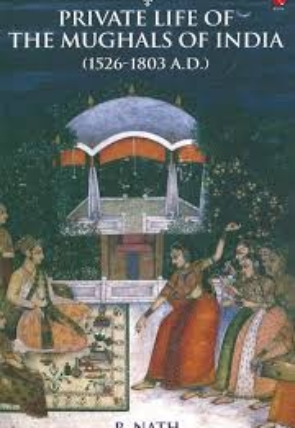
PRIVATE LIFE OF THE MUGHALS OF INDIA 2021 EDITION FREE BOOK PDF

PRIVATE LIFE OF THE MUGHALS OF INDIA 2021 EDITION FREE BOOK PDF
DESCRIPTION OF THIS BOOK :-
The opulent, sometimes scandalous, private lives of the Mughals of India is brought to life in this book. The text covers various aspects of their lifestyles, such as their food and drinks; clothes and ornaments; perfumes and incense; addictions and intoxicants; amusements and pastimes; rituals of circumcision; marriage and harem life. This well-written book with colour illustrations and photographs will be a delight to the lay reader as well as the serious scholar.
Titled as it is, the book deals with the little known, but much scandalized, private life of the Mughals who ruled from 1526, practically to 1803 when the British captured Delhi and Agra, their nerve-centres, from them. This included the period of the reign of three great Mughals, viz. Akbar (1556-1605), Jahangir (1505-27) and Shah Jehan (1628-58), of little more than a century.
They possessed not only fabulous wealth, but also the vision to found a culture-state, in the real sense of the term. Planting it in the soil as naturally as a banyan tree, they institutionalized their life, as much as their government. The former, almost completely shrouded in mystery, offers one of the most interesting aspects of medieval Indian history and culture.
Unfortunately, the official record of their day to day living which was scrupulously maintained has been lost to us.
It has been generally believed that the contemporary Persian chroniclers, living under the court patronage as they did, have blacked out this aspect of their history. Consequently, the modern historians, who have ventured to write on this subject, i. e. Mughal harem life, have almost entirely depended and drew on accounts of foreign travellers. These European travellers visited the Mughal empire contemporarily and some of them were received by the Great Mughals. But they had limitations of language, culture and accessibility to correct information. They viewed the things from the point of view of European civilization and were easily tempted to misinterpret, exaggerate and scandalize. Their narratives on Mughal life have, this, come up to be a strange mixture of a tiny fact with a mountain of fiction. Our historians who, unfortunately relied on their travelogues, have also erred in a large measure and have tremendously contributed to the misunderstanding and misrepresentation of the Mughal lifestyle. It has been unduly romanticized.
Truly, the Persian chroniclers were either prevented from knowing what happened within the four walls of the Mughal harem owing to strict protocol and Purdah, or even when they had access to this knowledge, they did not have the courage to write on this sensitive subject. The Mughal life, consequently, remained a closely guarded secret.
However, the human nature being what it is, these contemporary intellectuals’ sense of wonder led them to leave clever references to their private life in a word or two, casually, in historical narratives, and one has just to read between the lines. A lifetime’s rapport with these sources is needed to unravel these mysteries and, towards the end of it, one is simply amazed to see that there is probably nothing which was not known and which has not been recorded.
Thus, for example, when the historian Badaoni stated, on the eve of Akbar’s marriage with the princess of Jaisalmer, that she ‘obtained eternal glory by entering the female apartments’, he artfully recorded that the Mughals did not practice divorce, or separation even by death, and they married for ‘eternity’, which is how the institution of Sohagpura (The House of Eternal matrimony) came into being. One has just to live up with them to be able to write an authentic history on this abstract subject.
Thus does it cover such aspects of their living as food and drinks; clothes and ornaments; perfumes and incenses; addictions and intoxicants; amusement and pastimes; floor-coverings, furniture and lighting; and, of course, their sex life to which a few chapter have been devoted. How the Mughal king managed to keep a few hundred young and beautiful women attached to his bed is as enlightening a study as it is interesting.
Though based on research, it is written without its jargon, is a simple, readable form, for the general reader.
Only registered users can download this book.
Please Login/Register first.
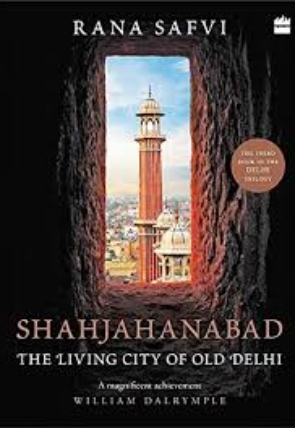
SHAHJAHANABAD THE LIVING CITY OF OLD DELHI 2021 EDITION FREE BOOK PDF

SHAHJAHANABAD THE LIVING CITY OF OLD DELHI 2021 FREE PDF
SHAHJAHANABAD : THE LIVING CITY OF OLD DELHI :-
SHAHJAHANABAD : THE LIVING CITY OF OLD DELHI.What is today the overcrowded, neglected city of Old Delhi was once the magnificent capital of the Mughal Empire. At its heart was the spectacular Qila-e-Mubarak, now known as the Red Fort. Commissioned by Emperor Shah Jahan in 1639, the beautiful city of Shahjahanabad was built around the spectacular Qila-e-Mubarak (Red Fort), on the banks of the Yamuna.
Almost a decade later, in 1648, Shah Jahan entered through the river gate and celebrated the completion of this ‘paradise on earth’ filled with gardens, palaces, water bodies, mosques and temples. About two hundred years later, the last Mughal emperor, Bahadur Shah Zafar, left the fort by the same gate after the failed Mutiny against the British in 1857.
Subsequently, both the fort and the city fared badly, as they faced the wrath of the British.The final instalment in Rana Safvi’s informative, illustrated series of books on Delhi, Shahjahanabad: The Living City of Old Delhi describes the magnificence of the fort and the city through its buildings that are a living monument to the grandeur and strife of the past.
SHAHJAHANABAD :-
The site of Shahjahanabad is north of earlier settlements of Delhi. Its southern part overlaps some of the area that was settled by the Tughlaqs in the 14th century when it was the seat of Delhi Sultanate.
The sultanates ruled from Delhi between 1206 and 1526, when the last was replaced by the Mughal dynasty. The five dynasties were the Mamluk dynasty (1206–90), the Khalji dynasty (1290–1320), the Tughlaq dynasty (1320–1414), the Sayyid dynasty (1414–51), Lodi dynasty (1451–1526) and the Suri dynasty (1540-1556)
Delhi remained an important place for the Mughals, who built palaces and forts. Most importantly, Shah Jahan had the walled city built from 1638 to 1649, containing the Lal Qila and the Chandni Chowk.
Delhi was one of the original twelve subahs (imperial Mughal provinces), renamed Shahjahanabad in 1648, bordering Awadh, Agra, Ajmer, Multan and Lahore subahs. Daryaganj had the original cantonment of Delhi, after 1803, where a native regiment of Delhi garrison was stationed, which was later shifted to Ridge area. East of Daryaganj was Raj ghat Gate of the walled city, opening at Raj Ghat on Yamuna River.
The first wholesale market of Old Delhi opened as the hardware market in Chawri Bazaar in 1840, the next wholesale market was that of dry fruits, spices and herbs at Khari Baoli, opening in 1850. The Phool Mandi (Flower Market) of Daryaganj was established in 1869, and even today, despite serving a small geographical area, it is of great importance due to dense population.
After the fall of the Mughal Empire post 1857 revolt, the British Raj shifted the capital of British controlled territories in India to a less volatile city, Calcutta in Bengal, where it remained until 1911. After the announcement of the change, the British developed Lutyens’ Delhi (in modern New Delhi) just south-west of Shahjahanabad. At this point, the older city started being called Old Delhi, as New Delhi became the seat of a national government. It was formally inaugurated as such in 1931.
It is approximately shaped like a quarter cìrcle, with the Red Fort as the focal point. The old city was surrounded by a wall enclosing about 1,500 acres (6.1 km2), with 14 gates:[10]
- Nigambodh Gate: northeast, leading to historic Nigambodh Ghat on the Yamuna River
- Kashmiri Gate: north
- Mori Gate: north
- Kabuli gate: west
- Lahori gate: west close to the Sadar Railway station, Railway Colony, including the tomb of Syed Abdul Rehman Jilani Dehlvi.[11][12]
- Ajmeri Gate: southwest, leading to Ghaziuddin Khan’s Madrassa and Connaught Place, a focal point in New Delhi
- Turkman Gate: southwest, close to some pre-Shahjahan remains which got enclosed within the walls, including the tomb of Shah Turkman Bayabani.
- Delhi Gate: south leading to Feroz Shah Kotla and what was then older habitation of Delhi.
The surrounding walls, 12 feet (3.7 m) wide and 26 feet (7.9 m) tall, originally of mud, were replaced by red stone in 1657. In the Mughal period, the gates were kept locked at night. The walls have now largely disappeared, but most of the gates are still present. The township of old Delhi is still identifiable in a satellite image because of the density of houses.
The Khooni Darwaza, south of Delhi Gate and just outside the walled city, was originally constructed by Sher Shah Suri.
Only registered users can download this book.
Please Login/Register first.
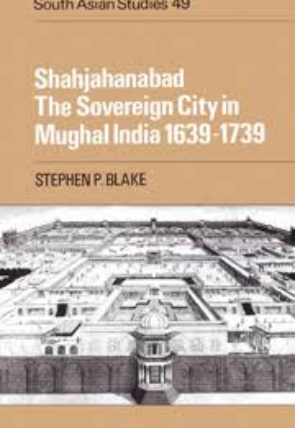
SHAHJAHANABAD THE SOVEREIGN CITY IN MUGHAL INDIA 1991 FREE PDF BOOK

SHAHJAHANABAD : THE SOVEREIGN CITY IN MUGHAL INDIA
DESCRIPTION OF THIS BOOK :-
From 1400 to 1750, Asian capital cities were often ruled in such a way that they became symbols of the power and influence their emperors extended over their states at large. These ‘sovereign cities’ became the empire in miniature. Shahjahanabad is the first study of a pre-modern Indian city (Old Delhi) as a sovereign city. Stephen Blake explores the way in which the emperors’ and nobles’ palaces and mansions dominated the landscape; how cultural life revolved around that of the emperors and their families; and how the households of the great men also dominated the urban economy and controlled a large percentage of state revenue. This study thus illuminates how Asian capitals were not the great amorphous agglomerations described by Marx and Weber. Instead they were urban communities with their own distinctive style and character, dependent on a particular kind of state organization.
Old Delhi or Purani Dilli is an area part of the greater city of Delhi, India. It was founded as a walled city named Shahjahanabad in 1639, when Shah Jahan (the Mughal emperor at the time) decided to shift the Mughal capital from Agra. The construction of the city was completed in 1648, and it remained the capital of the Mughal Empire until its fall in 1857, when the British Raj took over as paramount power in India. It was once filled with mansions of nobles and members of the royal court, along with elegant mosques and gardens.
It serves as the symbolic heart of metropolitan Delhi and is known for its bazaars, street food, shopping locations and its Islamic architecture; Jama Masjid being the most notable example, standing tall in the midst of the old city. Only a few havelis are left and maintained.
The site of Shahjahanabad is north of earlier settlements of Delhi. Its southern part overlaps some of the area that was settled by the Tughlaqs in the 14th century when it was the seat of Delhi Sultanate. The sultanates ruled from Delhi between 1206 and 1526, when the last was replaced by the Mughal dynasty. The five dynasties were the Mamluk dynasty (1206–90), the Khalji dynasty (1290–1320), the Tughlaq dynasty (1320–1414), the Sayyid dynasty (1414–51), Lodi dynasty (1451–1526) and the Suri dynasty (1540-1556)
Delhi remained an important place for the Mughals, who built palaces and forts. Most importantly, Shah Jahan had the walled city built from 1638 to 1649, containing the Lal Qila and the Chandni Chowk. Delhi was one of the original twelve subahs (imperial Mughal provinces), renamed Shahjahanabad in 1648, bordering Awadh, Agra, Ajmer, Multan and Lahore subahs. Daryaganj had the original cantonment of Delhi, after 1803, where a native regiment of Delhi garrison was stationed, which was later shifted to Ridge area. East of Daryaganj was Raj ghat Gate of the walled city, opening at Raj Ghat on Yamuna River. The first wholesale market of Old Delhi opened as the hardware market in Chawri Bazaar in 1840, the next wholesale market was that of dry fruits, spices and herbs at Khari Baoli, opening in 1850. The Phool Mandi (Flower Market) of Daryaganj was established in 1869, and even today, despite serving a small geographical area, it is of great importance due to dense population.
After the fall of the Mughal Empire post 1857 revolt, the British Raj shifted the capital of British controlled territories in India to a less volatile city, Calcutta in Bengal, where it remained until 1911. After the announcement of the change, the British developed Lutyens’ Delhi (in modern New Delhi) just south-west of Shahjahanabad.
At this point, the older city started being called Old Delhi, as New Delhi became the seat of a national government. It was formally inaugurated as such in 1931.
Only registered users can download this book.
Please Login/Register first.
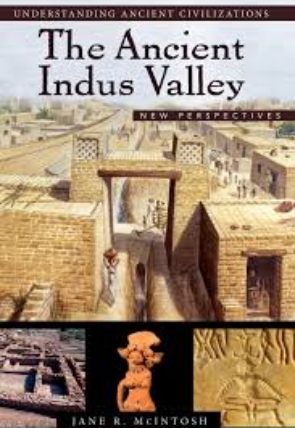
THE ANCIENT INDUS VALLEY

Only registered users can download this book.
Please Login/Register first.
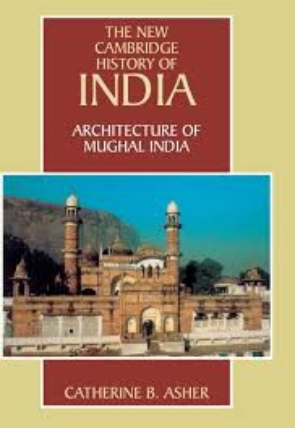
THE ARCHITECTURE OF MUGHAL INDIA

Only registered users can download this book.
Please Login/Register first.
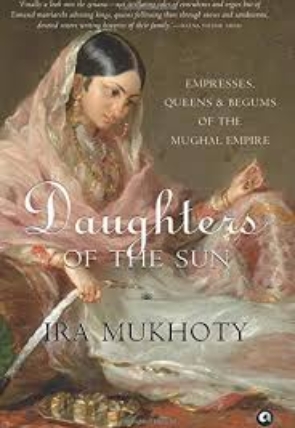
THE DAUGHTERS OF THE SUN

Only registered users can download this book.
Please Login/Register first.

THE EMPEROR JAHANGIR

Only registered users can download this book.
Please Login/Register first.
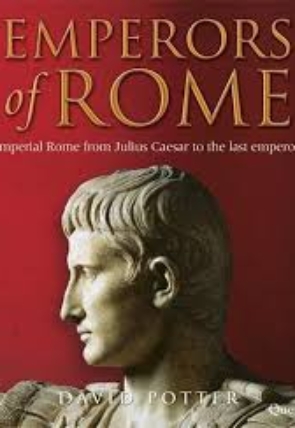
THE EMPERORS OF ROME 2021 EDITION FREE BOOK PDF

THE EMPERORS OF ROME 2021 EDITION FREE PDF BOOK :-
THE EMPERORS OF ROME FREE PDF BOOK DESCRIPTION :-
Written for a general audience, The Emperors of Rome by David Potter traces the rise and the fall of the Roman Empire. Giving prominence to emperors who played a major role in the Roman history, the narration mentions all emperors to have asserted the title of Augustus, while recounting briefly the socio-economical and religious background of the empire through the ages.
The Emperors of Rome: The Story of Imperial Rome from Julius Caesar to the Last Emperor, by David Potter, tells the story of all the emperors of Rome from Augustus Caesar to Romulus Augustulus. Narrated with a general audience in mind, David Potter, Professor of Greek and Latin in Ancient History at The University of Michigan, starts off his narration with a brief background to Roman emperors; an account on what was needed to become an emperor of Rome and what role they played as a political as well as a social figure. These “qualifications” needed to be the emperor, mentioned in the introductory note are being revised as the book progresses with the changes in the form and the function of a Roman emperor.
The story proper starts in the third chapter with a brief account on the first civil war between Marius and Sulla and the events that unfolded thereafter leading to the rise of Augustus Caesar. From there on, David Potter tells the story of one emperor after the other, describing in detail what each emperor had to do to get and remain in power as well as the relationships that existed among the emperors and their successors. This style of narration gives the reader an interesting view of the Roman political arena and what it took to survive it.
In the second part of the book, Potter pauses the main narration to focus briefly on the socio-economical atmosphere of Rome at the time. He describes the political hierarchy, methods of taxation, the hierarchy of the Roman army, religion, and citizen life. This adds a different dimension to the book and saves it from being a highly political, dry narration of one emperor after the other and better enable the reader to get a larger picture of the Roman Empire.
The writer also gives prominence to other important personalities of the times such as the Praetorian Guard, military commanders, wives and mothers of emperors, and in few cases empresses in their right who played a major role in the contemporary politics.
In the concluding part of the narration, Potter emphasizes the lack of cooperation between the Eastern and the Westerns Roman Empires and gives introductions to the many “barbarians” who threatened the empire resulting in its eventual fall.
The book is subdivided into many chapters each with its title hinting at its content. Some would find this subdivision helpful but for some, it could be a disturbance to the continuous narration of the story. David Potter closely follows the accounts on Roman history by ancient writers such as Pliny the Younger, Tacitus, or Cassius Dio, and later historians such as Edward Gibbon. He brings up their opinions about certain matters and gives his own as well, creating a conversation across time.
I would highly recommend this book to anyone who wants to get an overview of the rise and fall of the Roman Empire and its social and economic changes across time. While this could be not so informative for scholars of classics, the book certainly is a treasure to those who are just entering the world of classics.
Only registered users can download this book.
Please Login/Register first.
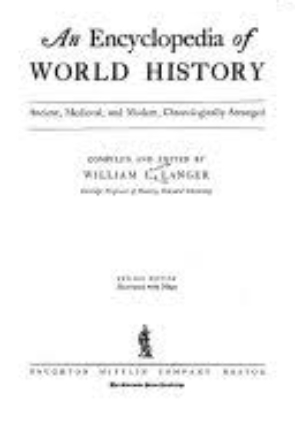
THE ENCYCLOPEDIA OF WORLD HISTORY 2021 EDITION FREE BOOK PDF

THE ENCYCLOPEDIA OF WORLD HISTORY 2021 EDITION FREE BOOK PDF
THE ENCYCLOPEDIA OF WORLD HISTORY DESCRIPTION :-
The Encyclopedia of World History is a classic single-volume work detailing world history. The first through fifth editions were edited by William L. Langer.
The Sixth Edition contained over 20,000 entries and was overseen by Peter N. Stearns.
Renowned historian Peter N. Stearns and thirty prominent historians have combined their expertise over the past ten years to perfect this comprehensive chronology of more than 20,000 entries that span the millennia from prehistoric times to the year 2000. With a unique format that has won it generations of fans, the ENCYCLOPEDIA continues to feature chronological entries grouped by geographic region, allowing readers to get an in-depth view of distinct events along with a virtual time line of human history.
But this new edition is much more than an expansion of a classic; it reflects important recent changes in historical trends and historical thinking. In addition to showcasing traditional facts of national leadership and state power, the Encyclopedia embraces social and cultural developments, non-European history, women’s history, religion, health, economics, technology, and other vital but less often reported aspects of the human drama. Here is a chronicle not only of major political events but of ordinary people, covering shifts in the relationships between men and women, developments in leisure, and demographic currents. And for all periods there are summaries of global developments that cannot be captured in national or regional frameworks.
As editor Stearns notes in his preface, “The world we know historically has greatly changed. The revisions that animate this edition celebrate this change, benefiting from the labors of countless venturesome scholars over the past several decades.” A masterwork whose roots date back to the nineteenth century, this exciting volume belongs at the elbow of every history lover and of anyone who has ever been curious about our constantly changing, remarkably diverse human story.
| Title | The Encyclopedia of World History: Ancient, Medieval, and Modern, Chronologically Arranged |
| Author | Peter N. Stearns |
| Editor | Peter N. Stearns |
| Edition | 6, illustrated |
| Publisher | Houghton Mifflin, 2001 |
| ISBN | 0395652375, 9780395652374 |
| Length | 1243 pages |
Renowned historian Peter N. Stearns and thirty prominent historians have combined their expertise over the past ten years to perfect this comprehensive chronology of more than 20,000 entries that span the millennia from prehistoric times to the year 2000. With a unique format that has won it generations of fans, the ENCYCLOPEDIA continues to feature chronological entries grouped by geographic region, allowing readers to get an in-depth view of distinct events along with a virtual time line of human history. But this new edition is much more than an expansion of a classic; it reflects important recent changes in historical trends and historical thinking. In addition to showcasing traditional facts of national leadership and state power, the Encyclopedia embraces social and cultural developments, non-European history, women’s history, religion, health, economics, technology, and other vital but less often reported aspects of the human drama. Here is a chronicle not only of major political events but of ordinary people, covering shifts in the relationships between men and women, developments in leisure, and demographic currents. And for all periods there are summaries of global developments that cannot be captured in national or regional frameworks.
As editor Stearns notes in his preface, “The world we know historically has greatly changed. The revisions that animate this edition celebrate this change, benefiting from the labors of countless venturesome scholars over the past several decades.” A masterwork whose roots date back to the nineteenth century, this exciting volume belongs at the elbow of every history lover and of anyone who has ever been curious about our constantly changing, remarkably diverse human story.
Only registered users can download this book.
Please Login/Register first.
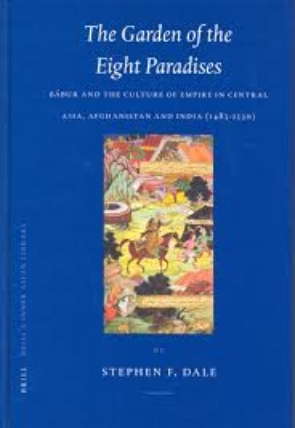
THE GARDEN OF EIGHT PARADISE

Only registered users can download this book.
Please Login/Register first.
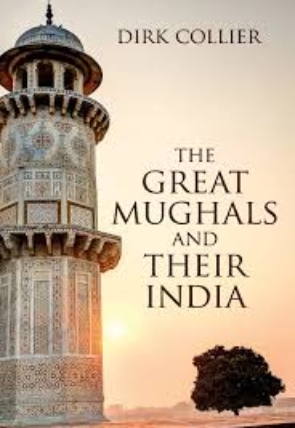
THE GREAT MUGHALS AND THEIR INDIA

Only registered users can download this book.
Please Login/Register first.

THE HISTORY COMPENDIUM FOR IAS PRELIMS
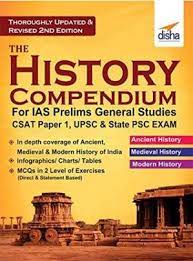
For Free Soft Copy Of The History Compendium For IAS Prelims Click Here.
For Hard Copy Of The History Compendium For IAS Prelims For Rs.299 Click Here.
Only registered users can download this book.
Please Login/Register first.

THE INDUS : LOST CIVILIZATIONS

Only registered users can download this book.
Please Login/Register first.

THE INDUS CIVILIZATION : A CONTEMPORARY PERSPECTIVE

Only registered users can download this book.
Please Login/Register first.
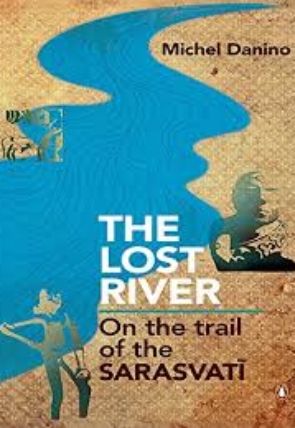
THE LOST RIVER : ON THE TRAILS OF RIVER SARASWATI

Only registered users can download this book.
Please Login/Register first.